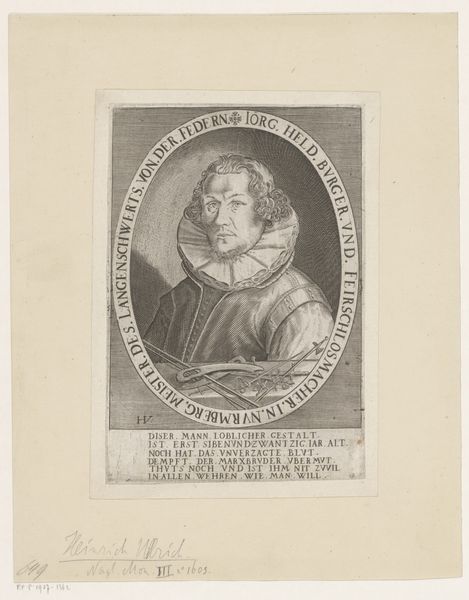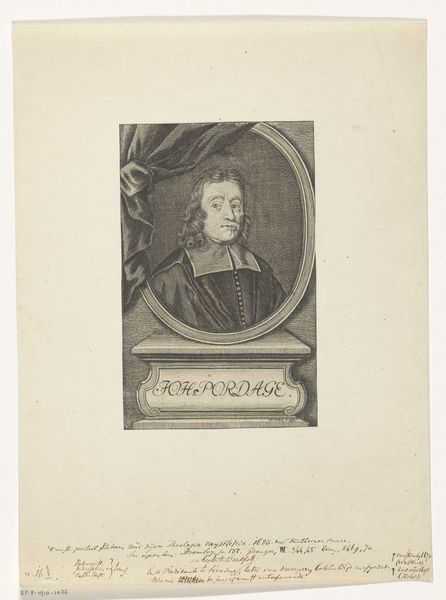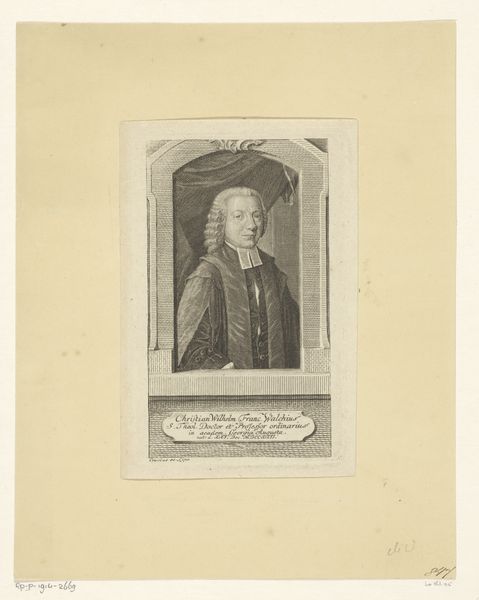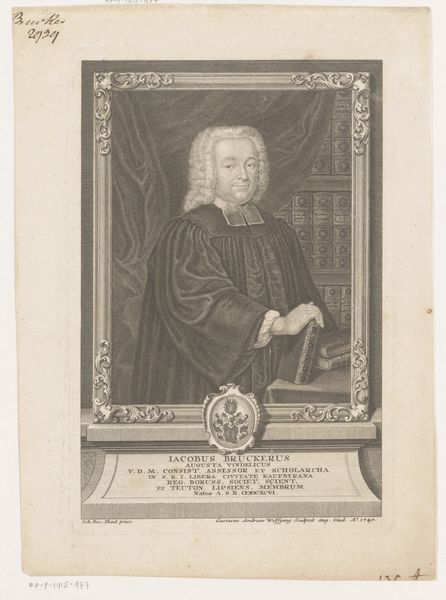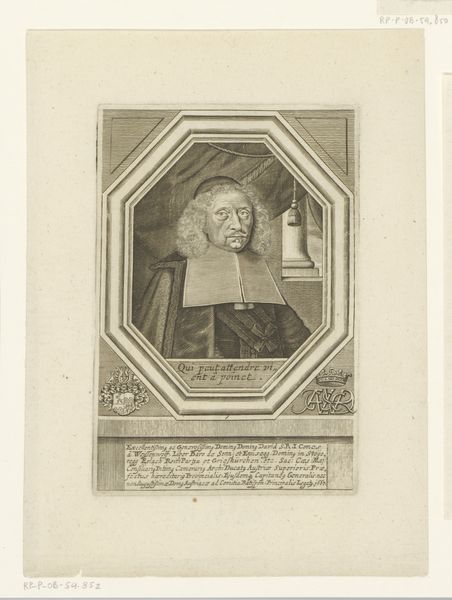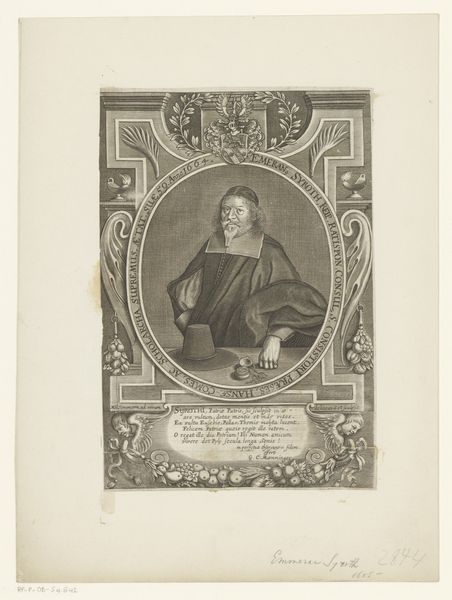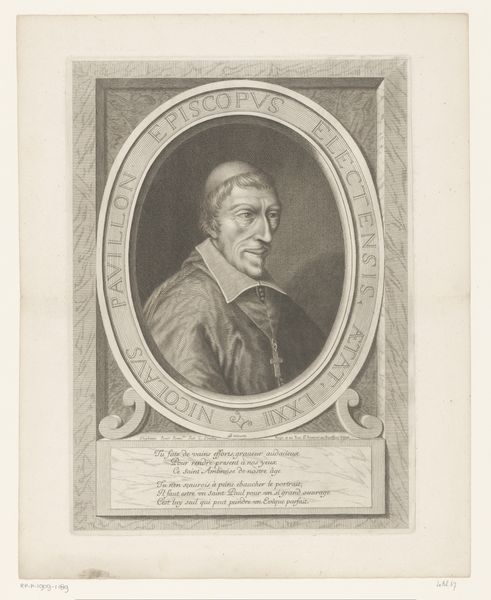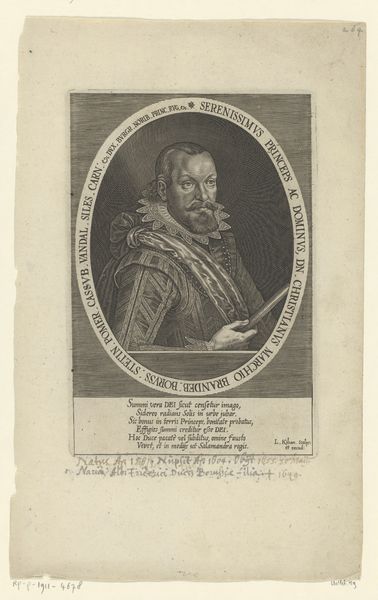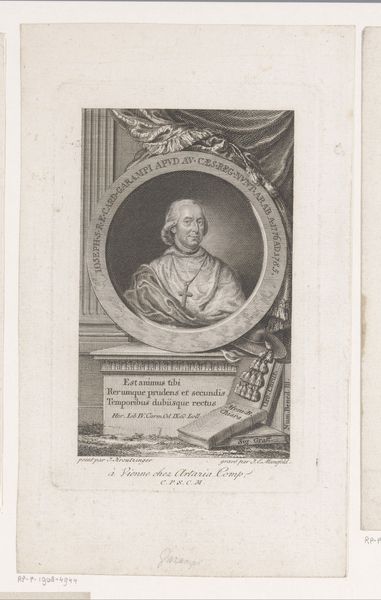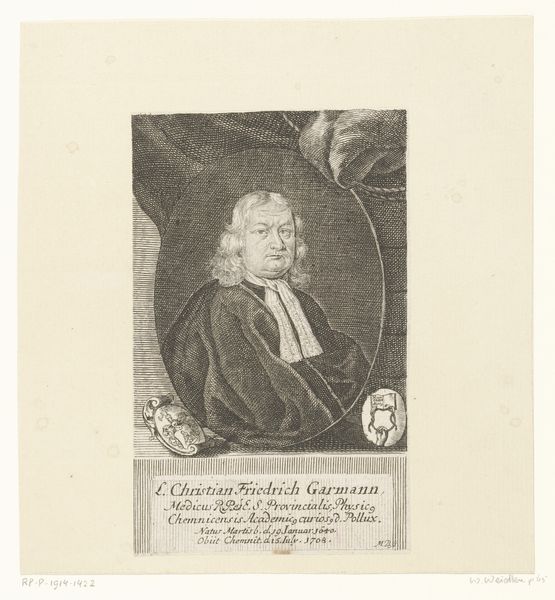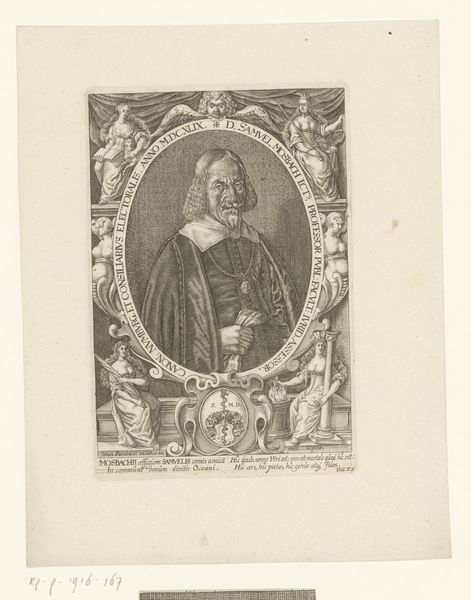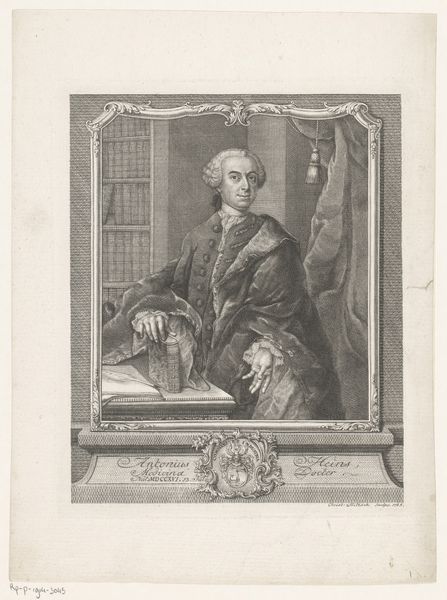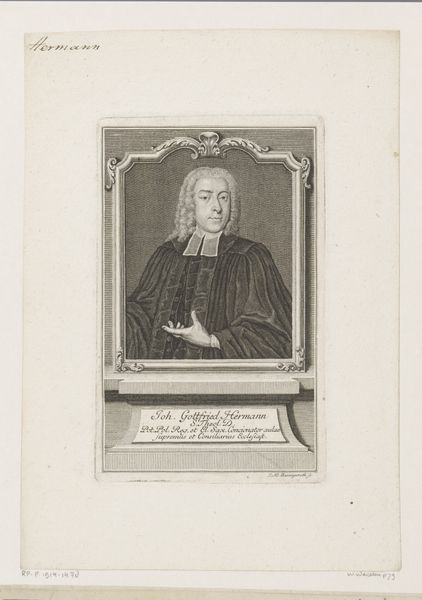
print, engraving
#
portrait
# print
#
book
#
old engraving style
#
traditional media
#
caricature
#
11_renaissance
#
engraving
Dimensions: height 144 mm, width 108 mm
Copyright: Rijks Museum: Open Domain
Curator: This print, etched by Robert Boissard between 1597 and 1599, depicts Matthäus Zell. Editor: It's quite severe, isn't it? Stern, yet meticulously crafted. The level of detail is impressive for an engraving, and he appears thoughtful but rigid. Curator: Zell, an influential clergyman during the Reformation. Boissard captures him framed within an archway of symbolic foliage and pillars, a style that elevates the sitter while containing him. Note how he is presented with his books and writing instruments. Editor: Books as signifiers of authority and learning, definitely. It's impossible to view this without acknowledging the deeply turbulent times of the Reformation, where religious and political identities were violently contested. His severity becomes quite understandable in that light. Curator: Absolutely. Consider the visual weight given to the objects, a symbolic language denoting his position and beliefs. He literally holds the book, thus embracing learning but also his power over interpretation. Even his clothing indicates status within the Church. Editor: It speaks volumes. A portrait wasn't merely a likeness then; it was an argument, a statement. What does it mean, in his social position, to commission such a deliberate image? He's aware he's crafting his place in history. How fascinating he appears so austere, with so little visual flourishes. The work conveys less personality and more resolve. Curator: Perhaps he wished to communicate conviction over emotion. Engravings were also relatively accessible. Prints could circulate ideas further afield. Editor: Yes, by controlling his image, and carefully managing symbols. He controls his representation. These visual artifacts were vital tools in disseminating information during a period of upheaval. He knew the value of a controlled narrative, of visual propaganda. Curator: I think the engraving captures a pivotal historical and theological moment through symbolic choices, making it a very revealing representation. Editor: It’s a great reminder that any artistic expression, however apparently simple, echoes complex socio-political landscapes, as well as of the power of visuals.
Comments
No comments
Be the first to comment and join the conversation on the ultimate creative platform.
